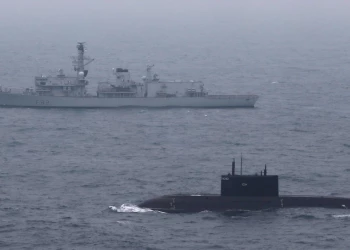Organised Crime and Grey Zone Conflict
Add bookmark
The bodies of 39 Vietnamese nationals found dead in a lorry container in the UK last year is a tragic reminder of how organised criminals are exploiting and profiting from the desperation of migrants trafficked into and across the frictionless borders of Europe.
Human trafficking in one form or another is prevalent in every European member state but, according to Interpol, Vietnamese adults and children are especially vulnerable to human trafficking, suffering exploitation at the hands of traffickers throughout Europe. For people being trafficked from Vietnam, journeys commonly begin in Russia, where entry often takes place using a recycled passport. Entry to Europe typically occurs overland via external borders on the ‘Eastern route’, such as Belarus and Ukraine. Common transit countries travelled through on route to Western Europe include Poland, Slovakia, and the Czech Republic.
Coercion and Control
Many Vietnamese victims of trafficking transiting through European countries experience long and arduous journeys. They are abused and exploited through forced labour or sexual exploitation, often at the hands of European gangs and traffickers. In many cases, victims are coming to the attention of authorities in European countries but authorities fail to identify them as victims of trafficking; seeing them as illegal migrants or criminals. Contemporary human traffickers vary from former ‘trafficked-victims-turned traffickers’ to housewives, business owners and pimps – and they share few common characteristics.
The illegal entry of migrants and victims of human trafficking across Europe is fuelled by inadequate identification and protection measures. The challenge for Law Enforcement Agencies (LEAs) across Europe is amplified by movement across borders, as smuggling and trafficking are easily conflated because the concepts can interweave with one another and take place simultaneously.
One can willingly choose to migrate, or to be smuggled across international borders as a means to migration and still become a victim of trafficking. Smuggling evolves into a situation of trafficking if one is deceived by their smuggler and revokes their consent. The relationship between being a smuggled migrant and being a trafficked person is fluid. Deception, force, coercion and/or abuse can occur at any point in a migrant’s journey, including on arrival in the final destination country.
To tackle migrant smuggling and human trafficking Europol launched the Joint Liaison Task Force last year. The operational focus of this new asset is to improve intelligence-led coordinated action against criminal networks involved in migrant smuggling and the human slave trade. Despite these efforts, human trafficking and smuggling continues to occur with alarming regularity as security authorities across Europe have enjoyed little success in disrupting criminal traffickers.
The Grey Zone
The undetected transport of 39 people through EU borders has unfortunately exposed severe fault lines in port security. Identifying vulnerabilities in border checks, Organised Crime Groups (OCGs) have overcome all physical and technical security measures put in place to prevent their exploitation of migrants.
Operating under the radar of law enforcement and intelligence agency surveillance activities, human trafficking into and around Europe has reached epidemic proportions. Moreover, the transit of migrants across borders has raised acute national security concerns regarding the potential return of Foreign Terrorist Fighters (FTF) from theatres of conflict, as well as the movement of arms, chemicals, biological agents and explosives for terrorist purposes. Lessons must be learned and every effort made to strengthen port and border security operations but illegal transit of people through Europe not only presents a clear and present danger to neighbourhood safety and national security, it is now a serious concern for defence and the maintenance of delicate international relations.
Rogue actions by states have demonstrated a propensity for competing below the threshold of armed conflict in what has become known as the grey zone. The problem the concept seeks to address is a timeless one and references the superiority of achieving one’s aims outside of battle by progressing the soundest strategy in war, which is to eventuate a moral disintegration of the enemy before engaging force, including a dislocation of enemy forces, ideally achieved through indirect methods.
As states are increasingly using non-military means to achieve their objectives, these grey zone methods, including election meddling, economic coercion, and the ambiguous use of unconventional force, serve to attack political and societal vulnerabilities, including security.
The fault lines exposed by OCGs human trafficking operations through the frictionless borders of European member states can be exploited as part of grey zone methodology for the movement of subversive actors, materials and weapons used to undermine, discredit and destabilise other nation states.
The complex interplay of supply and demand amongst perpetrators, abusers, profit-takers, exploiters and users of human trafficking across Europe creates a long chain of actors. This chain must be broken in order to prevent human trafficking while simultaneously reducing the risk of rogue states exploiting the security vulnerabilities at borders as part of their grey zone strategies.

























